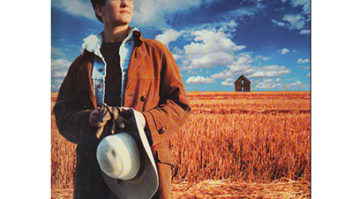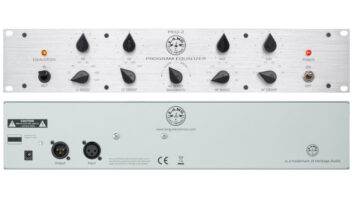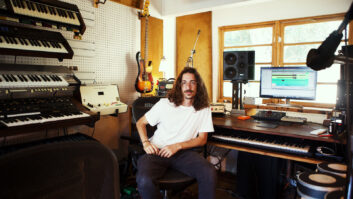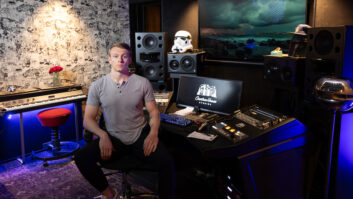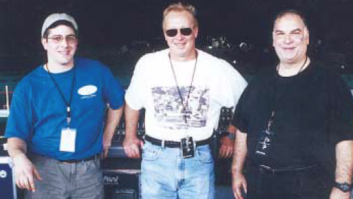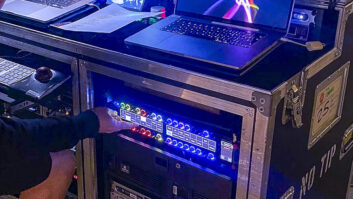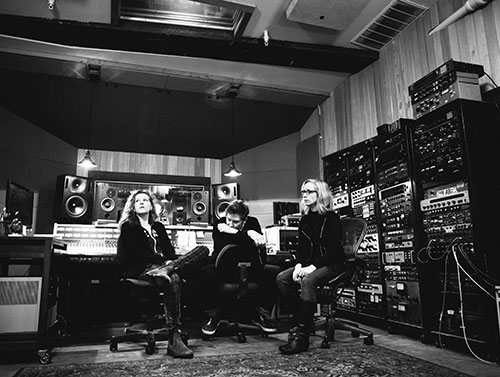
The first-ever album by the trio of Neko Case, k.d. lang and Laura Veirs is a thing of immense beauty: miles deep emotionally and sonically, with inventive musical touches and unmatched vocal performances and harmonies.
“But it would look pretty bad on me if it wasn’t,” jokes engineer/producer Tucker Martine, who helped make case/lang/veirs in his Flora Recording & Playback studio. “People would point and say, ‘Hey, there’s the guy who managed to make these three people sound bad.’”
The idea to assemble this supergroup began with an email from lang, who now lives in Portland, Ore., very near Flora. “k.d. wrote to Laura and Neko and said, ‘I just had an idea: The three of us start a band. What do you think?’”
The artists worked up a collection of songs together; much of the material began with song ideas that Veirs, who is married to Martine, had on ice. “Laura’s a real song generator,” Martine says. “She’s not been out doing as much as the other two have because we have two little kids, but she still tries to set time aside every week for writing.”
Meanwhile, Martine assembled a band to support the trio: guitarist Tim Young, bassist Sebastian Steinberg, keyboardist Rob Berger and drummer Glenn Kotche.
“I wanted to make sure we used musicians who would bring a unique point of view, and I knew we had to had to be prepared for anything,” Martine says. “k.d. might want to turn a song into a torch song, or Neko might want the drummer to sound like a shoe in a washing machine. We needed a band that was able to go anywhere they wanted to go musically, on short notice.”

Tucker Martine in Flora Recording & Playback studio.
Basic tracks—which were cut live to tape and then loaded to Pro Tools through Martine’s new Burl Mothership converters—were laid down during just five days in November 2015, with all three lead singers on hand. The artists had decided beforehand which of them would take the lead on each song, and all of them sang backup as well.
“I wouldn’t say that anyone’s signal path was always the same for every song, but there were the main go-to’s,” says Martine, who shared engineering duties with his assistant, Michael Finn. “For k.d. it was either my 47 or her 87, which she brings along and is just like a trusted companion for her, and it sounds fantastic. She’s really fine-tuned to the nuance of the air that a microphone is translating, and of course that has a huge effect on how a singer is singing, if they’re going for a certain airiness but they’re not hearing that airiness in the headphones. You want them to know they’re delivering, and not fighting against the microphone.
“But there was one song, ‘Why Do We Fight,’ that gave us trouble,” Martine continues. “We re-tracked most of it from the second to last day of mixing. Something just wasn’t working and k.d. wanted to take one last stab at saving it. So she re-sang it and I played drums, and Berger came down and played keyboards. We thought, ‘Let’s just give this an hour and see if we can beat it.’ And we did.
“On that song only, she sang into an RCA 44,” he continues. “I was walking to the studio that day, and—this sounds so corny—but it was actually my 44th birthday, and I was trying to think about how to capture the song from a different angle. I had a hunch that the 44 might bring the right kind of girth to the song. But the other songs were a split between a 47 or 87.”

Veirs also has a U 87 that she favors, Martine’s Klaus Heine-modified mic, and Case usually prefers an Audio-Technica 4050, but she used a U 47 at times, as well. Martine ran lang and Case’s vocals through Neve 1066 mic preamps, while Veirs’ path included a Telefunken V72.
“I ran all the lead vocals through the Retro 176 compressor, which I had recently gotten and was just in love with,” Martine says. “k.d., for example, is incredibly dynamic; I don’t know that I’ve ever recorded anyone else who will sing so quietly and, in a moment’s notice, burst into full voice. I remember thinking, this is why they invented compression! That’s why the 176 was so great. I could use, sometimes, 15 dB of compression and it never sounded like it was squashing her.”
For backing vocals, Martine and the artists played with a wide variety of sounds and textures. “One of the many references that was bandied about when we were brainstorming was girl groups,” he says. “I think that influence came through in the way vocals were treated. Sometimes we wanted the backup vocals to sound like one group of people, without making out distinct voices, and in other cases, we thought it was more important that you could hear the character of k.d. on the left, the character of Neko on the right, and the character of Laura at the center, or whatever it may have been.”
That approach to the backgrounds speaks to the overall balancing act on this album: “It stretched all of them because it wasn’t a k.d. lang record, it wasn’t a Neko Case record, it wasn’t a Laura Veirs record,” Martine says. “It was a record of finding where the three sensibilities came together. There was common ground, and they had to work to find it.”

